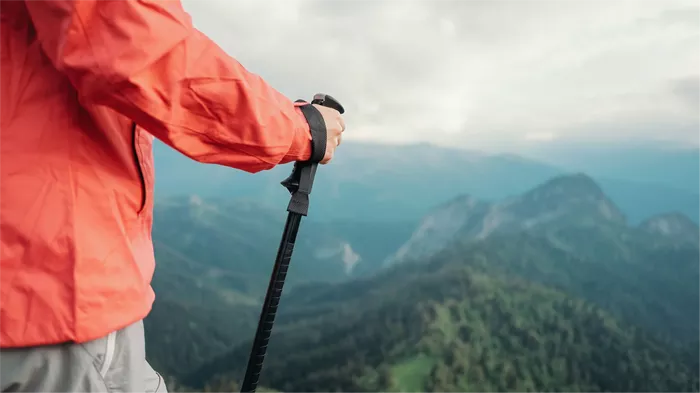Hiking, an age-old activity cherished by enthusiasts worldwide, encapsulates the essence of exploration, adventure, and connection with nature. As hikers embark on trails ranging from gentle slopes to rugged terrains, they often find solace and support in a humble yet indispensable companion—the hiking stick. Beyond its simplistic appearance, the hiking stick serves a multitude of purposes, each contributing to enhancing the hiking experience. Let us delve into the multifaceted role of this quintessential tool, unveiling its significance in the realm of outdoor exploration.
Balancing Act: Stability and Support
At the heart of the hiking stick’s functionality lies its ability to provide stability and support to the hiker. As trails present uneven terrain, varying inclines, and unpredictable obstacles, maintaining balance becomes paramount. The hiking stick, when wielded adeptly, redistributes weight, reducing strain on the lower body and enhancing stability. With each step, the stick acts as a trusted anchor, mitigating the risk of slips, falls, and injuries.
Moreover, for those traversing steep ascents or descents, the hiking stick becomes a dependable ally, offering additional leverage and support. By engaging the upper body muscles, it alleviates pressure from the knees and joints, facilitating a smoother journey. Thus, whether navigating rocky pathways or navigating through dense foliage, hikers find reassurance in the steadfast presence of their hiking stick.
Ergonomic Design: Enhancing Comfort and Efficiency
In the realm of hiking equipment, ergonomics reign supreme. A well-designed hiking stick not only provides stability but also enhances comfort and efficiency throughout the trek. Modern hiking sticks feature adjustable shafts, enabling customization according to the hiker’s height and terrain preferences. This adaptability ensures optimal alignment, preventing strain and fatigue during prolonged excursions.
Furthermore, the incorporation of ergonomic grips and wrist straps enhances handling and control, allowing hikers to traverse challenging terrain with ease. The grip material, often crafted from cork or rubber, provides a firm yet comfortable hold, minimizing the risk of slippage, even in wet conditions. Additionally, wrist straps distribute weight evenly, reducing strain on the hands and wrists while promoting a natural arm motion. Thus, by prioritizing ergonomic design principles, hiking sticks optimize performance and endurance, enabling hikers to push their boundaries with confidence.
Pacing and Rhythm: Fostering a Harmonious Stride
In the rhythmic cadence of hiking, pacing plays a pivotal role in maintaining momentum and conserving energy. Herein lies another facet of the hiking stick’s utility—it serves as a tool for fostering a harmonious stride. By synchronizing arm and leg movements, the hiking stick establishes a rhythm that enhances efficiency and minimizes exertion.
As hikers engage in a steady procession of steps, the rhythmic motion of the hiking stick mirrors their gait, promoting balance and coordination. This synchronized movement not only distributes effort evenly across the body but also encourages a fluid stride, reducing the risk of muscle strain and fatigue. Additionally, the repetitive action of swinging the hiking stick can serve as a form of low-impact exercise, stimulating circulation and muscle engagement.
Moreover, for hikers venturing into challenging terrain or navigating long-distance trails, maintaining a consistent pace becomes essential. The hiking stick acts as a metronome, guiding the rhythm of the journey and instilling a sense of momentum. By setting a steady tempo, hikers can optimize their speed without overexertion, ensuring endurance over extended distances. Thus, the hiking stick becomes not only a physical support but also a catalyst for pacing and rhythm, shaping the cadence of the hiking experience.
Environmental Awareness: Navigating Nature with Precision
Beyond its role as a physical aid, the hiking stick serves as a tool for enhancing environmental awareness and navigation. As hikers traverse diverse landscapes, they encounter a myriad of natural features, from rocky outcrops to meandering streams. Herein lies the importance of the hiking stick—a versatile instrument for probing, testing, and gauging the terrain.
When confronted with uncertain footing or obscured pathways, hikers can use the hiking stick to assess the stability of the ground and detect potential hazards such as hidden crevices or loose rocks. By probing the terrain ahead, they can make informed decisions regarding their route, avoiding potential pitfalls and optimizing safety.
Moreover, the hiking stick can double as a makeshift measuring tool, aiding in estimating distances and assessing obstacles. By gauging the depth of water crossings or the height of obstacles, hikers can plan their route with precision, circumventing unnecessary detours or challenges. Additionally, in dense vegetation or low-light conditions, the hiking stick can serve as a guide, parting foliage and providing a clearer path forward.
Furthermore, for those embarking on wilderness treks or off-trail excursions, the hiking stick becomes an indispensable aid in navigation and route-finding. By marking trail blazes or clearing debris, hikers can leave subtle traces of their passage, ensuring they can retrace their steps if needed. Thus, the hiking stick not only facilitates physical navigation but also fosters a deeper connection with the natural environment, imbuing the hiking experience with a sense of mindfulness and exploration.
Conclusion
In the realm of outdoor exploration, the hiking stick stands as a testament to simplicity and utility. Beyond its unassuming appearance, it embodies a myriad of functions, each contributing to enhancing the hiking experience. From providing stability and support to fostering pacing and rhythm, the hiking stick serves as a steadfast companion, guiding adventurers through the untamed wilderness.
As hikers embark on trails old and new, they forge a symbiotic relationship with their hiking stick, relying on its unwavering presence to navigate challenges and embrace the beauty of nature. With each step, the hiking stick becomes more than a mere tool—it becomes a conduit for connection, empowerment, and exploration.
So, the next time you embark on a hiking adventure, do not overlook the humble hiking stick. Embrace its versatility, harness its power, and allow it to elevate your journey to new heights. For in the tapestry of outdoor exploration, the hiking stick remains an indispensable thread, weaving together the joys of discovery and the triumphs of the trail.

